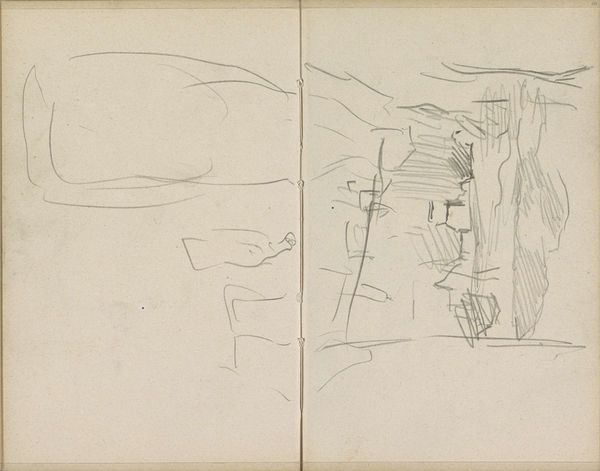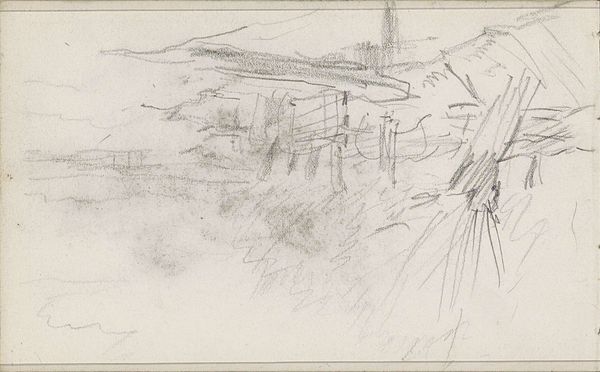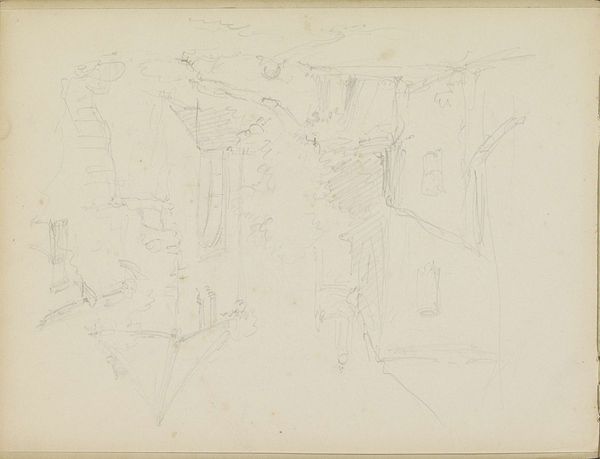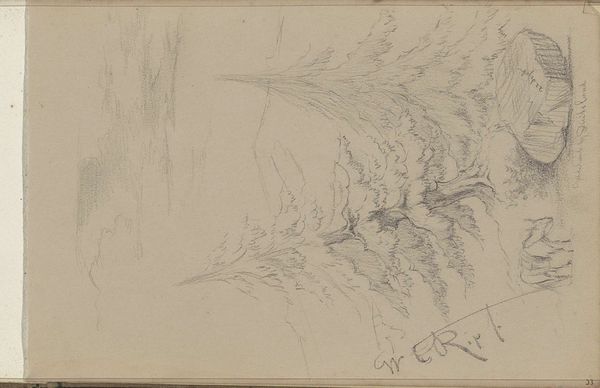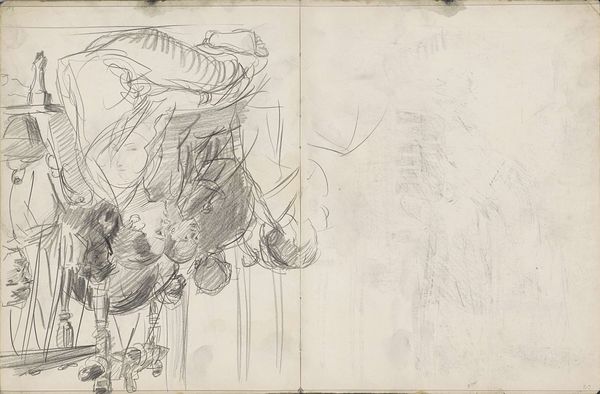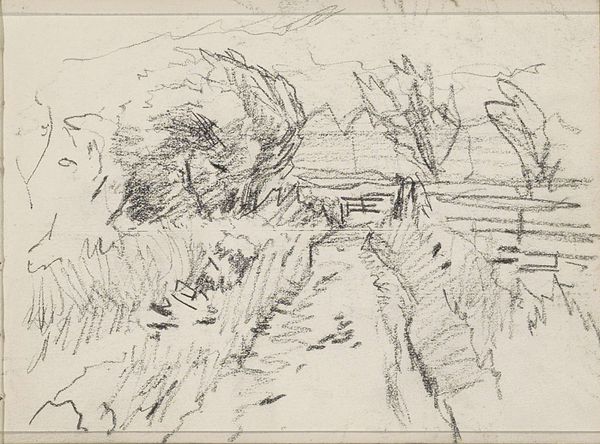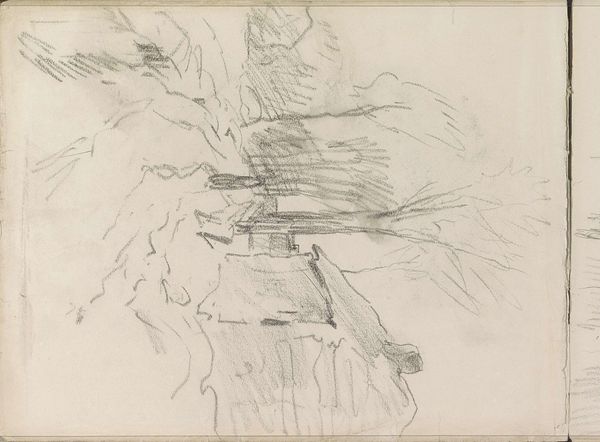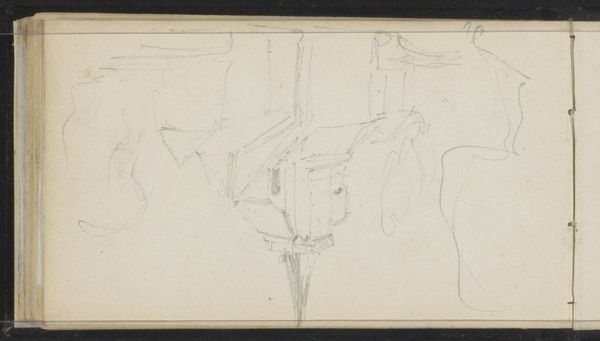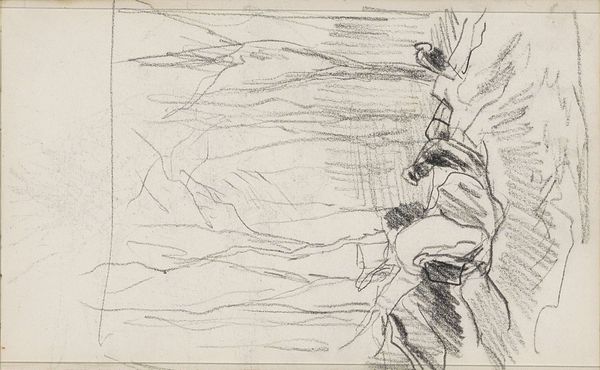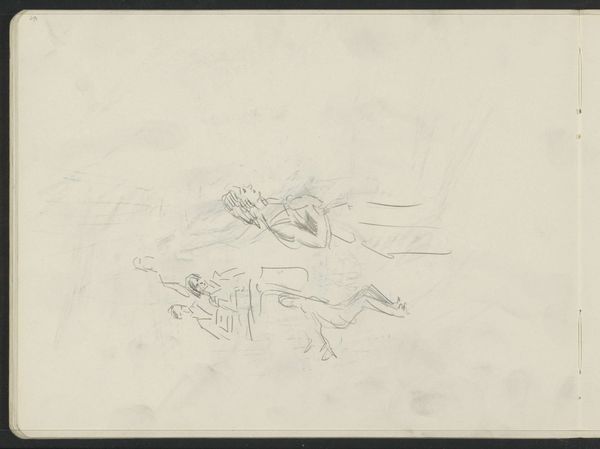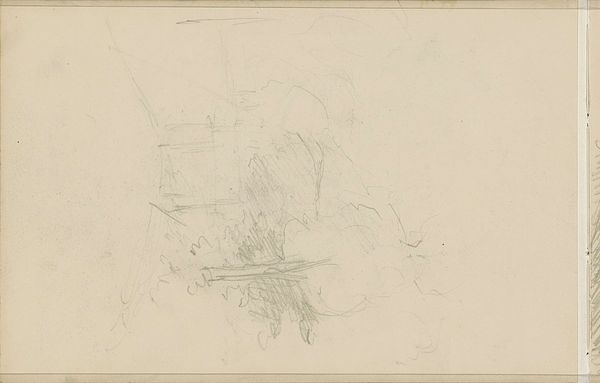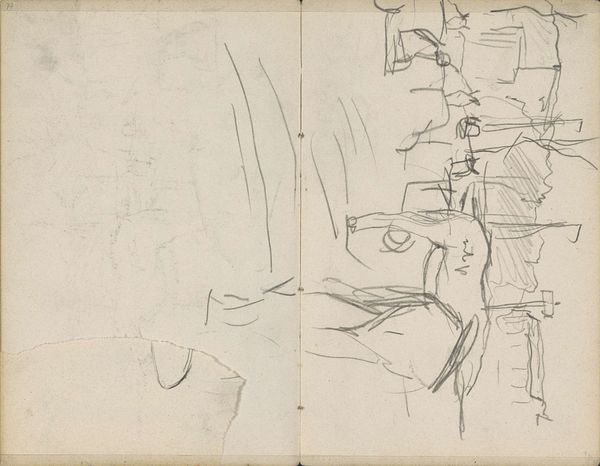
drawing, pencil
#
drawing
#
landscape
#
figuration
#
romanticism
#
pencil
Copyright: Rijks Museum: Open Domain
Curator: Here we have Charles Rochussen’s "Path between the Trees," a pencil drawing created sometime between 1840 and 1860, currently residing at the Rijksmuseum. Editor: Immediately, I’m struck by the contrast. The left panel has a darker, more imposing landscape feel, while the right side appears lighter, focusing on figure studies. It's quite striking. Curator: Rochussen was certainly working within the Romantic tradition here. His artistic output was clearly molded by the prevailing artistic climate of the period. The dramatic lighting and composition on the left speak to Romanticism's emphasis on emotion and nature’s sublime power. Editor: But how complicit was the artistic culture of the 1840s and 60s in representing, or perhaps obscuring, social realities? Looking at the figure studies on the right, what kinds of bodies are considered worthy of artistic attention, and how does that reflect broader societal power structures? Curator: The choice of subject reflects a broader societal interest in landscape and perhaps also portraiture through character study. Landscapes during this time were particularly resonant with emerging ideas of nationhood and identity, a source of artistic patronage in nascent political states. Editor: Landscapes can often serve as ideological stages. Are these just idyllic renderings of nature or do they tacitly support existing power relations of the time? I’m especially curious about the implications when figures are present or absent in such idealized depictions. Who gets to access this path, both literally and representationally? Curator: Certainly, it is productive to engage in these critical considerations that prompt examination of social forces shaping cultural narratives. Here, though, the quick sketching points toward capturing ephemeral moments of light or fleeting glimpses of form. Perhaps we observe not so much of the social context of visual culture and more of Rochussen's experimentation with form. Editor: Yet, by engaging critically with artwork, even with pieces seemingly detached from overt political narratives, we unveil historical and social layers that reveal underlying ideologies shaping artistic choices. We might discover even more if we had the means of accessing lost perspectives through intersectional discourse that engages multiple identities within cultural institutions, or we can reimagine what is seen in artworks in our new socio-political paradigm. Curator: Indeed, encouraging dynamic reinterpretations across varying identities fosters enriched dialogues—one goal in our public function of shaping understandings of art's place in culture. Editor: Exactly. Thank you. This discussion prompts further contemplation on how art and society intertwine, even in subtle, evocative works like Rochussen's drawing.
Comments
No comments
Be the first to comment and join the conversation on the ultimate creative platform.

